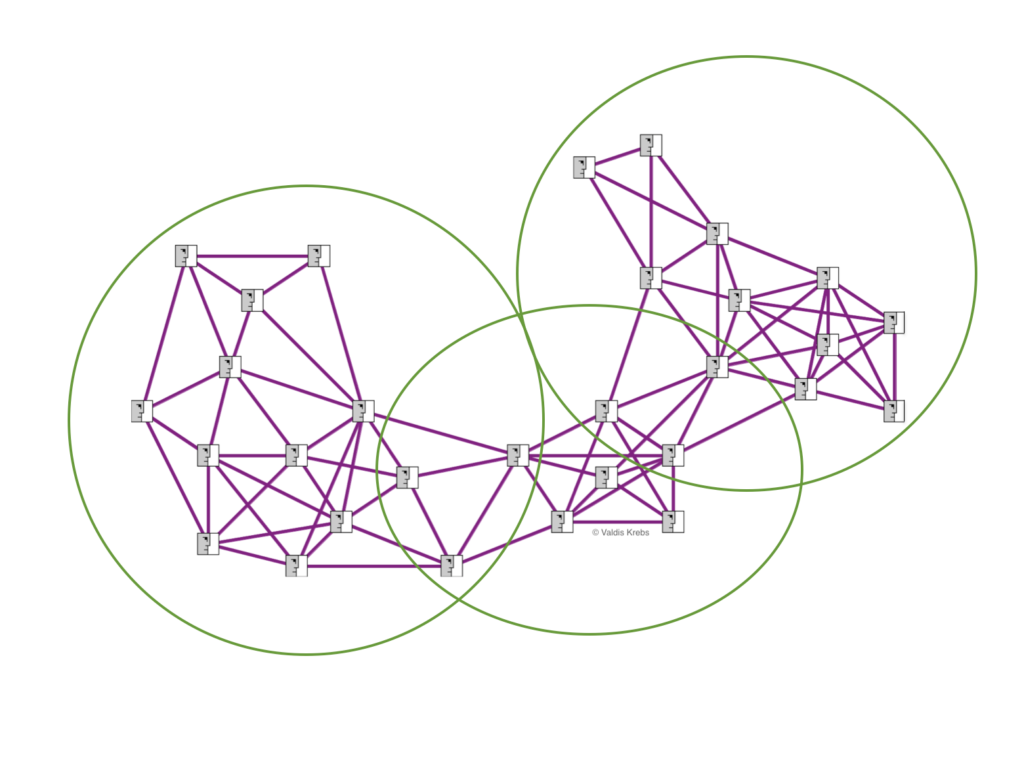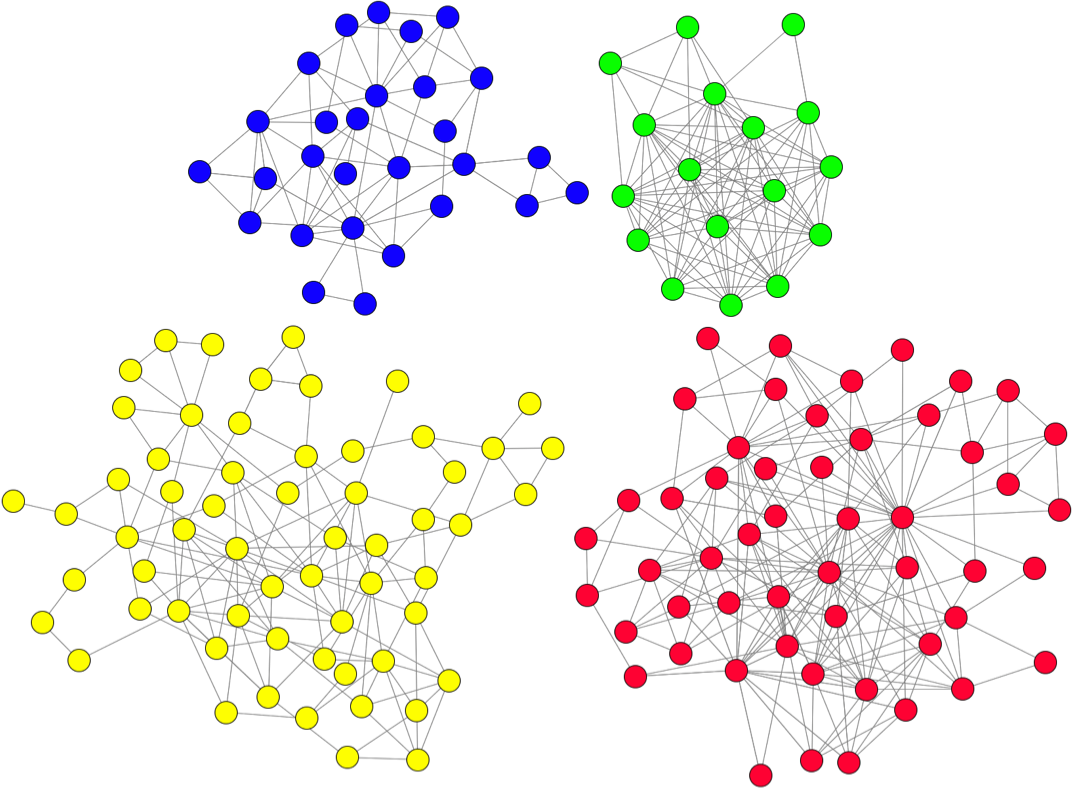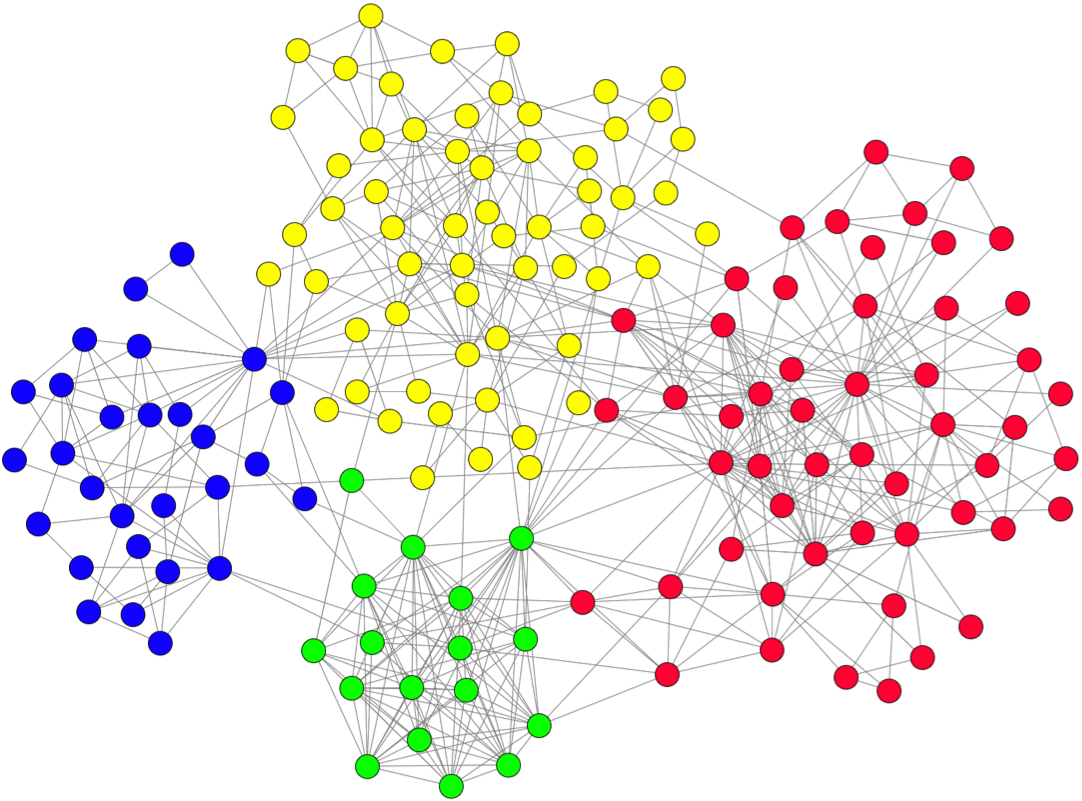Menu

It is funny, when we think about networks, we think about groups, communities, systems, and other complex collections of interacting entities. Yet, the most popular social network metrics are “individual centralities”! Who is the most connected? Who is the best connected? Who is the hub? Who is the influencer? Who spans the most structural holes in the network? We are looking at complex interconnected systems yet we are focusing on individuals. Does this make sense?
People playing key roles in organizations and communities are important, but not for what they do for themselves! They are important for how they weave the network — what they do for the whole community. From our 25+ years of network consulting with medium to large communities and organizations we have never seen a successful entity run by a few highly central actors. The opposite is also true — we have never seen a successful entity of any size that has perfectly distributed centrality — everyone has the same or just about the same number of connections. Connections in human networks are unevenly distributed, but the distribution is not extreme like in a man-made network with a handful of hubs and many, many spokes. A hub-and-spoke network is great design if what flows in the network is distributed by clear rules of law and/or physics, like electricity. Human affairs, involving agency of each connected node, are not easily handled by simple networks. We live in complex interconnected clustered networks (a.k.a. small-world networks in core-peripehry structures) where common physics fails to work. Self organization and emergence matter more than simple rules and methods.
If not the influencers and hubs in the network, then who and what matters in our human networks? It is not those that stick out, but those that help us stick together — they are the key roles in our self-organizing networks!
It is not those that stick out, but those that help us stick together !
Let’s look at an emergent network from one of our clients. It is made up of 4 groups. These groups could be departments, projects, product teams, task forces, etc. In this situation they were various project teams working on products and services for a common customer. In Figure 1, we see the four project teams — each with it’s own color. The nodes are employees, and the links show who regularly works with whom on a variety of tasks.

Figure 1 – Four Project Teams
The key to this organization’s success was not only how well each project team collaborated internally, but how all four teams worked together. No matter how well they each worked separately, it was the connected effort that mattered. It was the connected effort that built the right solution for their customer. Figure 2 shows us how each project team was connected to other project teams.

Figure 2 – Four Connected Teams
The people connecting the teams are seen as boundary-spanners — bridging one team with another. The key boundary spanners are shown as larger nodes in Figure 3 below. The boundary spanners bridge their team with the other teams by having sufficient connections with their own group and with the other groups. It is through these connections that knowledge, experience, news, and know-how can travel when needed or when requested.

Figure 3 – Bridging Boundary Spanners
A few of the boundary spanners are nodes with high centrality in the network — most are not. Yet all boundary spanners play a very important role in the organization. Without bridging connections the organization would only function well on the Ordered Side of the Cynefin framework (covering Simple/Obvious and Complicated).
Instead of focusing on a few individuals, maybe we focus on the patterns of relationships, flows, and interactions in our complex human systems? What does emergence tell us? It is not the centrality of a few that matters, it is the weaving of many that is key to a successful community or organization!
To discuss this case further, and other topics on networks and complexity, please join us for the upcoming Exploratory from Feb 10, 2021 through March 10, 2021 with weekly sessions.
Cognitive Edge Ltd. & Cognitive Edge Pte. trading as The Cynefin Company and The Cynefin Centre.
© COPYRIGHT 2024

This is not the second part of the re-wilding post, but a building block towards it. ...
There are two major forms of stupidity on the various debates that sprint on social ...